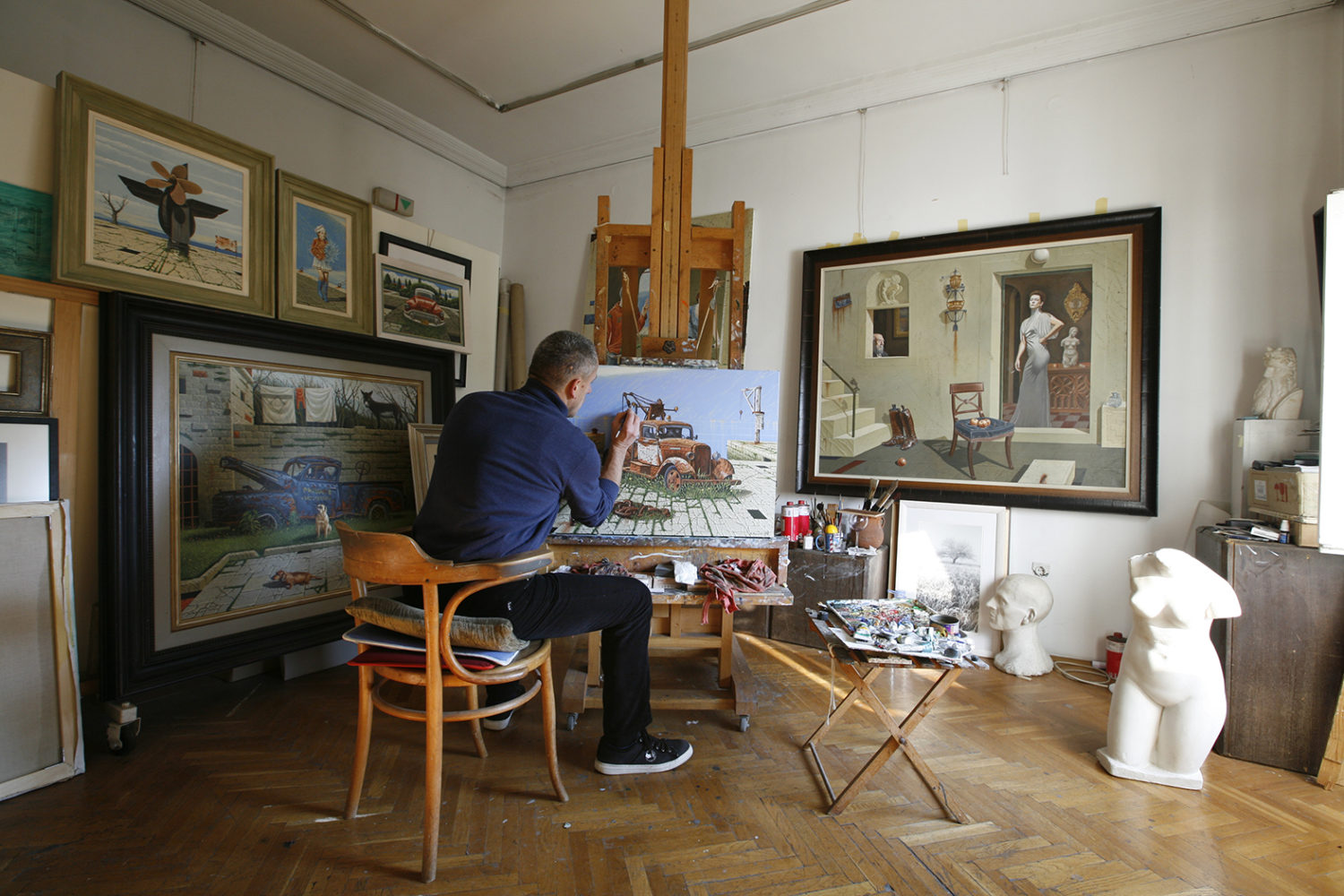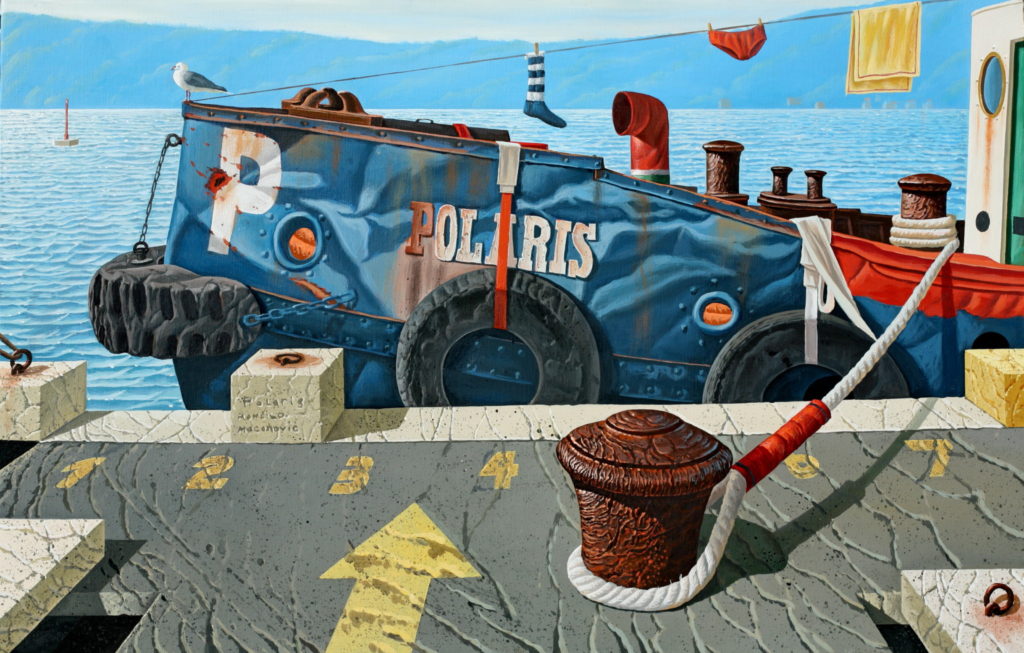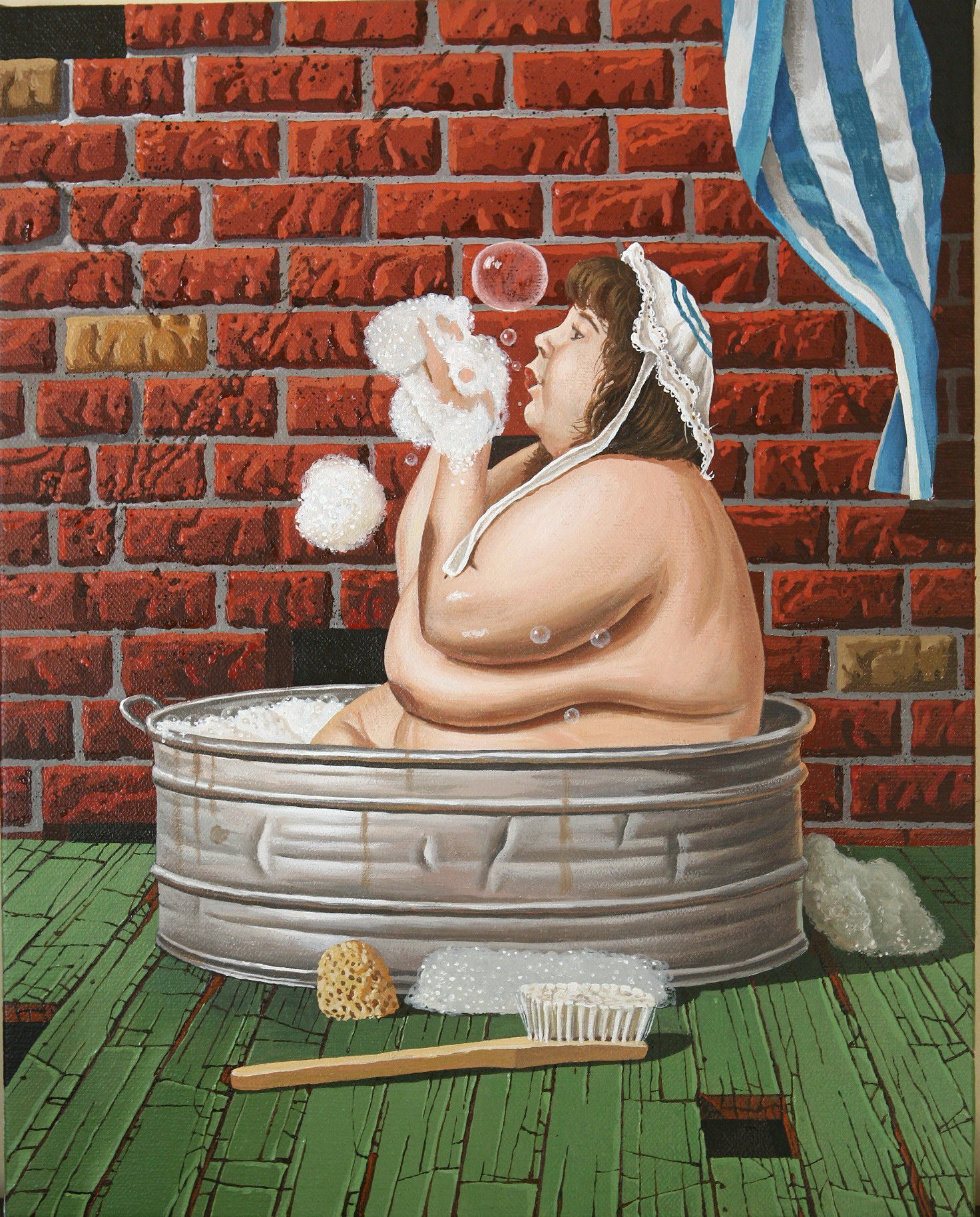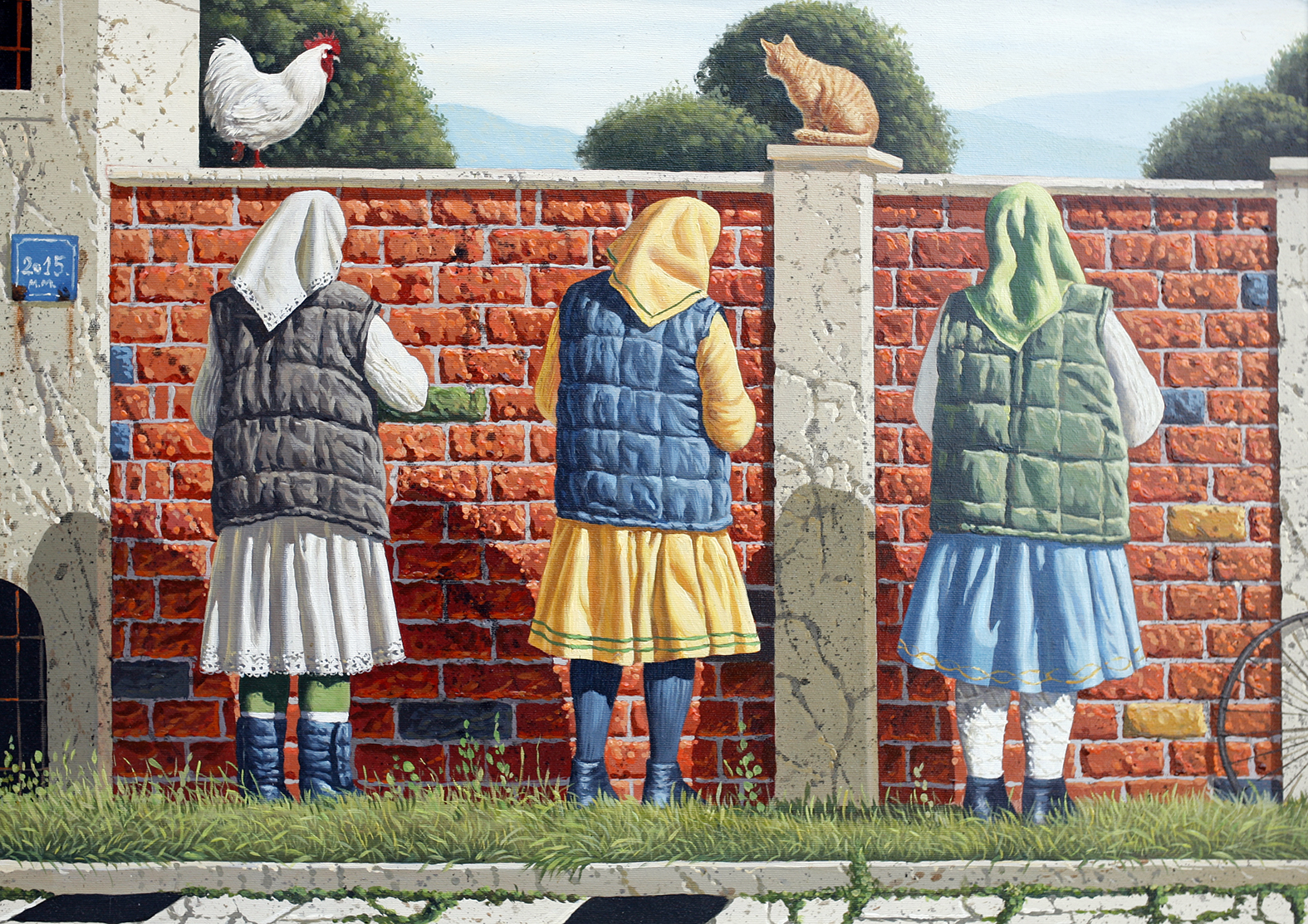Painter Momčilo Macanović is one of the best Montenegrin figurative artists of the younger generation. He was born in Nikšić in 1966, and graduated in 1993 from the Faculty of Fine Arts in Cetinje, in the class of professor Pavle Pejovića. He won the first prize for sculpture at the Faculty of Fine Arts in Cetinje. He has been a member of the Association of Artists of Montenegro since 1994. He has exhibited in over fifty group exhibitions at home and abroad and his work, which mostly can be found in the Podgorica Gallery “Piazan“, are some of the most respected and sought-after in Montenegro. He lives and works in Tivat.
#mnetoday: You are a sculptor by profession, but in artistic terms, you express yourself through painting. Why did you decide to make this transition?
MM: I still enjoy sculpture, but there are several reasons why I started primarily to paint. The famous Michelangelo said that painting and sculpturing are the same art, but I painted before the Academy and somehow it was easier to achieve results in painting. It is much less demanding in terms of the requirements, for sculptures I need a lot more space and painting gives me a much greater opportunity for artistic expression, primarily through the use of color. Since I make a living from art, there is a better chance of selling a picture than a sculpture and that gives me the money to continue my work.
#mnetoday: Where do you usually find inspiration?
MM: Inspiration is all around me. What I paint and what I’m known for, has its own specific colors, its a light that can be seen in my work. This is a Mediterranean light which is present not only when I paint any part of an external Mediterranean environment but also when I paint an interior space. When painting parts of the Mediterranean I don’t want it to look like a postcard and to look like some kind of conformism, because today in the galleries you can see that almost everybody wants to paint the Mediterranean and be a Mediterranean painter. That was never my goal; it’s just there by itself because for many years I have been living in this environment and was simply absorbed in it. My pictures are totally different from the work of painters who live in Vojvodina for example, or in any other country – it’s a completely different light and atmosphere. This is perhaps the most important aspect of my work, and on the other hand, I’ve never tried combining things that I had already processed myself. I make some original combinations in which I create characters and details that suit me. I have to admit that in terms of visual arts I’ve always been a traditional painter and extremely influenced by the early Italian Renaissance, especially some painters like Andrea Mantegna, Piero Della Francesca …. They both used the same rules of combination, especially Mantegna – in some of his pictures he used fragments of ancient Rome. Even today there are some of the details which he used in his work, such as his famous painting of Saint Sebastian. From then until now, not much has changed, more or less, everything has remained the same. Therefore, I use such combinations myself and adapt them to suit me.

#mnetoday: Art theorists usually define your style as a kind of hyperrealism. Irrespective of the style, you’re still primarily a painter of the Bay of Kotor, which is virtually non-existent, since it’s gradually disappearing.
MM: Unfortunately, that’s right. Because of everything that’s going on with the construction on the coast, virtually every day one of the sea views disappears. Every day something new is built or being built, but for me as a painter, all this new architecture is not at all interesting. For me, the old Mediterranean square, that has been here for several centuries, is much more interesting, or the old architecture and reliefs that characterized Boka for centuries. As a sculptor by profession, I merged sculpturing and painting and I literally use it on my canvases. To me what’s essential is the specific local spirit which is transmitted from generation to generation and that you can experience how people used to live here and what they thought. We didn’t change much, but we just got new technology and we think that we have changed – we did not really change at all, we are even worse in comparison to the previous generations. In any case, there are so many inspiring motifs here that one can use artistically. My paintings are called hyperrealism but that’s a bit of a cliché. My work, in the way that I approach painting, is a kind of hyperrealism – the precise execution of the image but it’s not photorealistic by all means. It was never my goal to make it look like a photo. Although I use a photo for some details that I cannot make up, those details finally, are something of my own because I add my own colors and light. This is my vision, the way I see the world through my colors. It’s a big difference between what I do and let’s say, what is known as photorealism in America. After all, the Renaissance masters such as Dürer used this same way of painting, but it was not photorealism.
#mnetoday: The specific feature of your images is a special old patina, a kind of aura of decay, the details of metal are usually corroded. Why is that?
MM: If I painted only those specific things or things that surround me, it would be too sterile. Adding such details as age or deterioration makes it much more interesting, especially with that specific light that literally breaks through the walls. All this then in an artistic sense, looks spectacular, but in the modern real world, it’s another story completely – all those surfaces are clean and sterile. Add some details such as rust or cracks and those surfaces revive artistically, but it’s only understood by those who are engaged in this work.

#mnetoday: Many people compare you to the famous Vojo Stanić by your motifs and actions, except that the atmosphere in his pictures is cheerful, playful, almost jovial. With you, however, all the particulars, the characters on the pictures are much more serious.
MM: I have the highest regard for Vojo Stanić, but what he and I do are two different worlds completely, although they have some things in common, some points of contact. I like to use figures, I love to use something grotesque and add some type of gag to the picture. My first painting role models were different than those of Vojo Stanić. His paintings are much more based on the surrealist movement like the work of Rene Magritte. Stanić works with a completely different world and a different atmosphere – the beaches and architecture of Herceg Novi. Besides being a sort of visual chronicler of Herceg Novi, Vojos’ paintings are completely different than mine because I emphasize specific skills and try to bring my painting performance as close to perfection as I can. Vojo on the other hand, pays more attention to creating a humorous atmosphere than a skillful performance, his coloring and his colors are totally different from mine.
#mnetoday: Your works are characterized by the fact that they show some typical local characters. How do people react when they recognize themselves on your canvases?
MM: Mostly I did ask these people for permission to paint them. It’s not something that applies only to painting, it applies to films as well. Directors often used specific people that were for one reason or another interesting and needed to revive a film scene. I use the image of some of these characters, a figure that provides a special atmosphere. For example, I use some photos of these people that I personally took, or some old photos I accidentally found. It is essential that these people simply preside in an image and the people here are easily recognized as is some of my models, for example the famous Splić from which I did dozens of pictures. He is the perfect presence as a character for painting; he has posed for me many times.

#mnetoday: How much time do you spend painting at an easel and does this work fulfill you or not?
MM: I must admit that my work fulfills me completely, although I don’t work nearly as much now as I did at the start of my career when I painted for 17 to 18 hours a day. The first two years after the Academy, when I lived in Belgrade and worked with the owner of the gallery, I was motivated to create something good before the first exhibition in 1997 at the Kolarac and I almost never left my studio. That’s what I managed to keep doing over the next couple of years, but now I cannot work for that length of time because something drags me outside, especially when the weather is nice then you can go for a walk and find inspiration for new paintings. When I get tired of walking then I sit down and work. Even walking is part of the work because artists work even when they go out, hang out, go to exhibitions or museums and absorb the atmosphere, learn and experience something new and different … It is often more effective than sitting at an easel and just putting brush strokes on the canvas. Art is generally something incredible – it’s primarily very satisfactory. In particular, satisfaction is when a man does something good and that feeling is something that cannot be bought with money. Of course, in this world you cannot live without money but for me money was never the motivating factor to create a painting, nor is it generally found in any one of the greatest artists of the world. Michelangelo, for example, made works of art whose value today exceeds 50 million, and he lived like a bum and material things did not interest him. This is a characteristic of great artists because they create out of passion and because art is primarily a state of mind.
#mnetoday: How do you work with the market, through the galleries or directly? Since you make a living from painting, is it difficult for you as an artist to part with your own creations?
MM: Most painting are sold through the gallery but I must say that I sell directly too, but rarely, because Montenegro is a very small market. Therefore, it is better to leave the issue of commercialization to the galleries because that way you avoid the very awkward situation of bargaining with someone who wants to buy your picture. I would sell other people’s pictures much easier than my own and therefore galleries are better and a practical solution because they need to do that job. In general, it is not difficult for me to part with my creations, although among them there are some pictures that were hard to sell. Realistically, all the creations in painting, sculpturing, literature or any other type of art, were not made by the artists for themselves but for others. If I paint a picture and other people don’t see it, that’s the same as when a writer writes a novel that doesn’t get published and is instead kept in a drawer. An image is something that has to go out to an audience and has to be seen because no matter how many times it has been seen, if it is a really good picture it’s never enough. In the end everything will remain in this world because we cannot take it with us when we die. I don’t understand artists who jealously guard their creations and won’t sell them even though their studios are full – in the end, when you go to the other world, all the pictures will be sold by someone else.

#mnetoday: In addition to painting you’ve been working with art photography lately. Where did your love for this medium come from?
MM: Art Photography is close to painting because it’s part of visual arts. Although I haven’t studied photography, I think I still have a certain advantage compared to some others who work with it because I’ve been watching everything around me as a painter my entire life. So I always have an eye for special details, the play of light and so on … With photos the most interesting thing is landscapes, and because I walk a lot, it gives me the perfect opportunity to pursue photography and to take notes in the way that a photographic camera can capture something. For me this is more of a way to relax than a serious business and I think that documentary photography has the greatest advantage by far compared to all other kinds of art, because only photography can perfect and record a moment, and it literally “freezes” time. No other art form can do that.
#mnetoday: Once you said that the artist can reach more by painting a single image, than by lecturing for twenty years in schools?
MM: Yes, this is one of my favorite sayings. In fact, I had the opportunity to work in schools and teach others trying to study art. I think, however, that people who are naturally gifted, don’t need to work in the schools, no matter how noble it is, because it simply takes too much time and energy. I think you cannot work two jobs and be great in both of them – you must devote yourself to only one. I’m the only one responsible for everything I’ve done with painting and there’s no one else to blame but me. I don’t belong in a group of artists that have high opinions of themselves, but I can say that in the 20 years of my career I created paintings that are recognizable while still doing something which I am relatively satisfied with considering my background and where I came from and the circumstances under which I worked. If I had spent those 20 years teaching at a school, I would have retired without leaving a tangible artistic material trace behind, but now I left a lot of pictures that are everywhere. I hope I will succeed to still make at least as many more pictures as I have until now.
[tg_gallery_slider gallery_id=”15567″]


